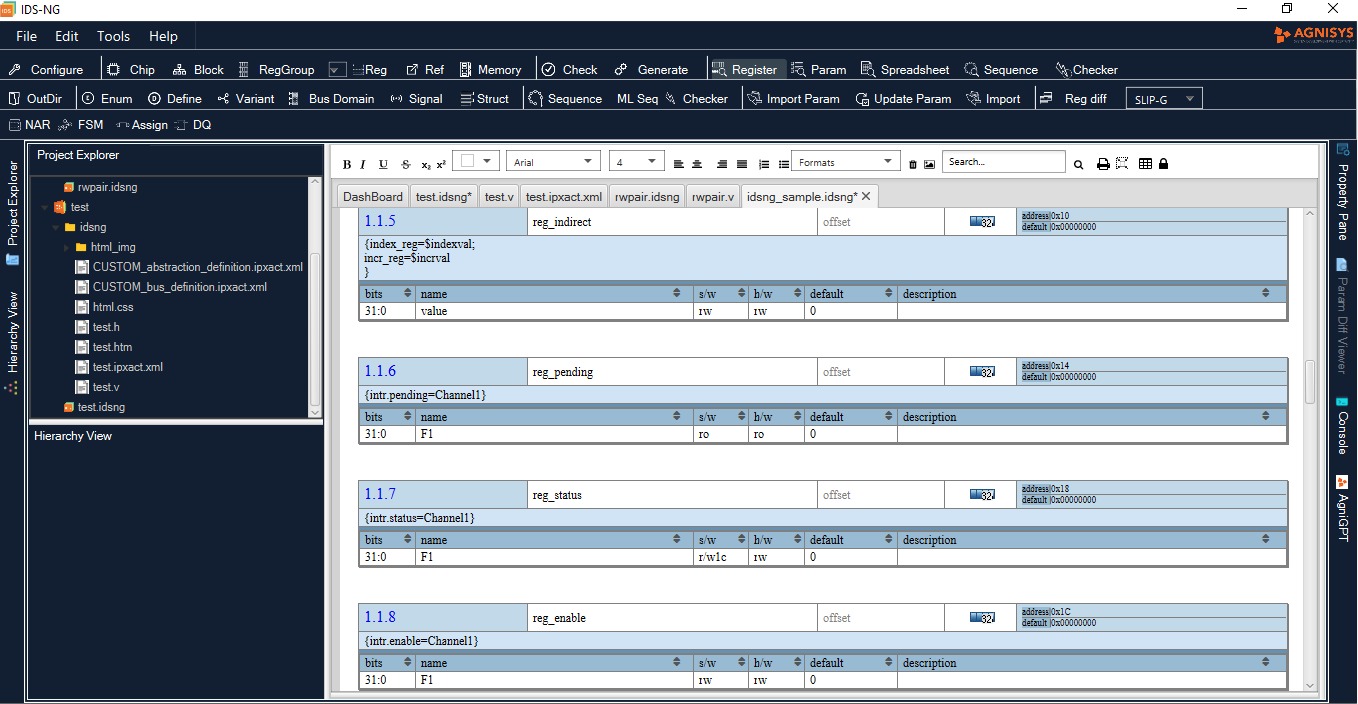Why Chip Developers Must Manage Their CSR(s)
If you search for the definition of CSR, you will likely find “corporate social responsibility” at the top of the results. This refers to initiatives whereby a company supports, or actively participates in, charitable activities that benefit society as a whole. But CSR has another meaning for chip developers: control and status register. Both meanings of the abbreviation are clearly important, and this post considers what they mean for individual engineers.
CSR = Corporate Social Responsibility
Engineers, like many other people, may devote significant amounts of their time and money to support causes they consider ethical and valuable. Few, if any, non-profits could survive without the support of donors and volunteers. In some cases, engineers may be able to directly use their professional skills in such endeavors. For example, they might help build websites or set up computers for schools or charitable organizations.
The CSR movement was formalized in the middle of the last century, but businesses have a much longer history of contributing to social causes. Today, the practice occurs through a combination of governmental incentives, industry self-regulation, and corporate-level efforts. While it does not limit individual engineers to make their own charitable choices, CSR frequently offers ready-made opportunities for employees to participate in socially beneficial activities.
As such, chip developers can manage their own social responsibility and support CSR. At the same time, engineers follow professional and personal ethics with regard to their jobs. For example, bearing in mind that their chips may be used in safety-critical applications, verification engineers may consider it socially responsible to find and fix every bug humanly possible. Similarly, designers may seek to adopt a correct-by-construction flow to avoid hardware bugs in the first place.
CSRs = Control and Status Registers
When it comes to designing chips correctly and verifying that the design works as intended, there are few areas more important than the registers controlling the hardware and gathering status back. These are known as control and status registers (CSRs), giving the term CSR a second meaning for chip developers. Just like social responsibility, registers must be managed properly in order to yield the best possible results given the available time and resources.
CSRs are one side of the hardware-software interface (HSI) through which low-level software such as drivers and embedded code accesses the hardware. This software is responsible for initializing and configuring the design, performing the mission functions for the chip, and receiving status. In-field diagnostics might also be performed via the CSRs, and the status might include real-time performance metrics. Registers are an extremely flexible way to get maximal value from the hardware.
It might seem that CSR design should be straightforward. In theory, an architect details every register array, register, field, and bit in a chip specification, and then designers simply write the appropriate register-transfer-level (RTL) code to implement the spec in hardware. Of course, it’s never that simple. In addition to the usual challenges of interpreting specifications and the possibility of design errors, there are some issues specific to CSRs.
Challenges in Managing CSRs
Traditionally, registers have been specified in English or another natural language, which is inherently imprecise and subject to different interpretations by different teams. There are widely adopted standard executable formats for registers, rather than just one. SystemRDL and IP-XACT are quite distinct, with differing capabilities, and there are multiple versions of IP-XCAT in use. Adding vendor-specific extensions, proprietary register formats, and spreadsheets makes for a CSR Tower of Babel.
Even with these specification formats available, many CSRs are still defined in natural language specifications and datasheets. While not traditionally considered executable, recent advances in artificial intelligence (AI) and natural language processing (NLP) have made it possible to extract precise CSR data from chip-level documents. While this is good news, it shouldn’t mean that chip development teams have to become AI experts to benefit.
Chip developers have to deal with different CSR specification formats because their IP comes from so many sources. Commercial IP suppliers, electronic design automation (EDA) vendors, partners, and open source sites may all contribute parts of the design, with divergent CSR formats. Even within the same company, different teams may choose different input and output formats. The full-chip hardware and software teams must somehow interpret and manage all this information correctly.
The Agnisys CSR Management Solution
There is a proven solution available today: the Agnisys IDesignSpec™ Suite. This specification automation solution accepts all the CSR specification formats mentioned so far, providing maximum flexibility in choosing IP sources. The Agnisys SmartDatasheet site uses leading-edge NLP and large language model (LLM) technology to process natural language CSR specifications. IDesignSpec can translate between different formats as needed.
From any specification format, IDesignSpec automatically generates RTL designs, Universal Verification Methodology (UVM) testbenches and tests, C/C++ headers and software tests, validation environments that tie the hardware and software together, and high-quality documentation. Additional AI capabilities enable the specification of custom CSR programming sequences using natural language. Whenever any specification changes, all output files are simply re-generated.
IDesignSpec supports a wide range of special register types, including indirect, indexed, read-only/write-only, alias, lock, shadow, interrupt, counter, paged, virtual, external, and read/write pairs. The RTL designs it generates include interfaces to standard buses such as APB, AHB, AHB-Lite, AXI4, AXI4-Lite, TileLink, Avalon, and Wishbone, all required clock-domain-crossing (CDC) logic, and any requested functional safety mechanisms such as parity, error-correcting code (ECC), cyclic redundancy check (CRC), and triple module redundancy (TMR) logic.
Get Started Today
Agnisys can’t help you manage your CSR, although we try to do our part for our own community. We can absolutely help you manage your CSRs. We know that your chip development team is not an island, and that you receive IP from many source in many specification formats. IDesignSpec digests everything and speaks all specification languages. Get started with our innovative and powerful solution by requesting a demo or more information today.








